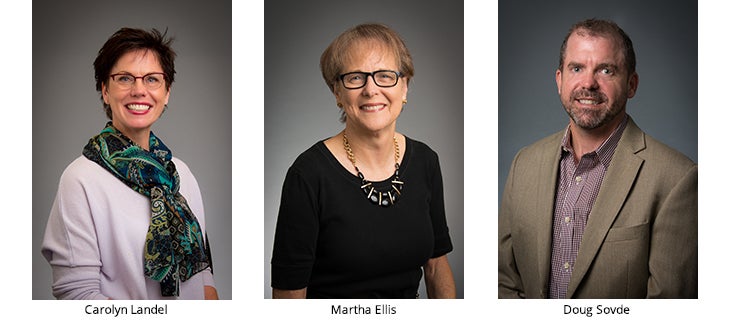
Rigor: Evolving Definitions in a Changing Landscape
In mathematics education, rigor has emerged in recent years as a (sometimes) hot-button issue that has sparked a litany of questions. What does rigor really mean? How can rigor be assessed? Is it the same across K–12 and higher education? And how does this definition of rigor influence how we think about effective instruction?
The Dana Center recently published What Is Rigor in Mathematics Really? This brief explores the issue and provides recommendations for a new definition of rigor through, in part, a synthesis of interviews with leading mathematicians and math educators. Far from attempting to provide an authoritative definition and associated recommendations, it is intended to stimulate ongoing and productive conversations on the topic.
We caught up with three Dana Center leaders for an informal discussion about some of the topics driving the rigor conversation. Those participating in the roundtable dialogue were: Carolyn Landel, Managing Director; Martha Ellis, Director, Higher Education Strategy, Policy, and Services; and Doug Sovde, Director, K–12 Education, Strategy, Policy, and Services.

Q: There are many questions around rigor that impact how students and their work should be assessed. What factors are driving the rigor conversation today?
Martha Ellis: In higher education, I think the question of rigor has come up because, with math pathways, we’ve disrupted 100 years of how mathematics has been structured and taught.
Doug Sovde: We're so good at saying, “Here's what kids need to learn,” and we codify that in all kinds of ways. We repackage that into different kinds of courses, but we're not very good about saying, “Well, what does it look like once they've learned it? A student who is meeting this learning objective in a rigorous way is able to use this kind of thought process or provide this type of answer or apply it in this kind of way.” I think we need to make it operational when we're creating learning objectives and design principles.
Martha Ellis: And it doesn't just affect math. It affects all disciplines that have math as a requirement. We in the mathematics community have traditionally said, “Well, College Algebra is what you need.” Now we're saying, “No, it's not. Not necessarily, at least”—and so we've left a void with the other disciplines. Educators in disciplines beyond mathematics should ask themselves, “What are the skills, competencies, and conceptual understandings that we need to develop so this student is quantitatively literate enough to be successful in my profession?”
Q: Traditionally, notions of rigor have often been tied to measures of the relative or perceived difficulty of a particular subject area or a given course. The idea that “If enough students have a hard time passing this class, it must be rigorous” became a sort of shorthand for the concept. What are some of the problems you see with this?
Martha Ellis: A specific course such as College Algebra is not a proxy for defining rigor. Rigor involves many elements such as conceptual understandings and application of knowledge, not just computational fluency.
Doug Sovde: On the K–12 side, that would be legacy Algebra II in high school math. There are other ways to think about rigor that allow for broader access to different kinds of content. Considered properly, it has its own meaning that, frankly, propels the learning and usage of all different kinds of mathematics.
Carolyn Landel: Also, there is absolutely an equity issue at play. If we define a single course as a proxy for rigor and that course is not the one that is most relevant or applicable for students and their pursuits, we know those factors are diminishing student success and serving as a barrier to their advancement.
Martha Ellis: When you talk to educators in some other disciplines, they see College Algebra as a gatekeeper: “If a student can't pass College Algebra, then they're not going to be successful in my program.”
Q: Why does the Dana Center seek to re-engage the field in the rigor conversation?
Carolyn Landel: We want to move the conversation to a place where we can have a research-informed discussion that broadens how we talk about rigor, so we can begin to move away from personal ideologies to new ways of thinking about the topic.
Doug Sovde: What this definition provides is a way to shift rigor away from a set of expectations and onto a set of products. We’d like to focus on what the student does instead of what the system does. What you're really looking at is what students are doing with the math that they’re being asked to work with.
Martha Ellis: We've disrupted the whole thing. It was so comfortable and we thought we had it all figured out—and absolutely we do not. [laughs] So now we've said, “You know, this [other course, other definition of rigor] is what's needed. We need to fill in that blank for people.
Doug Sovde: We need to do that, I think, by showing examples, of not necessarily what student work is, but rather what student work could look like. It's not about what the math is. It's about how you use the math.
So, what do you think? We invite you to join in the rigor conversation.
Once you’ve read it, be sure to follow us on Twitter. Use the hashtag #MathRigorTalk to let us know what you think!
Get in Touch
We collaborate with state districts and teachers to develop innovative curricula, resources, and professional development.
